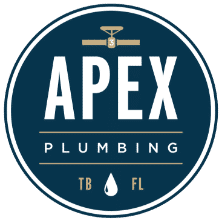
If you’ve just bought a home or are getting ready to remodel your home and turn it into your dream place, congratulations! But before you get too far in the renovation process, there’s one important thing to be aware of: the likely possibility that you will have to replace your piping. Galvanized pipes can cause major issues for your home and your family’s safety. Here’s how to determine if your home has galvanized pipes and what you’ll need to do to restore your home’s safety and function.
What Are Galvanized Pipes?
Galvanized pipes are steel or iron pipes that have been dipped in a zinc coating to prevent corrosion and rust. These were commonly installed in homes built before 1960 as an alternative to lead pipes for water supply lines. However, decades of exposure to water can cause these pipes to corrode and rust on the inside, sealing themselves shut and causing issues for your home. While they have a lifespan between 40 to 100 years, if your home is from the 1960s or earlier, your pipes are likely nearing the end of their lifespan.
Safety Risks or Concerns With Galvanized Piping
While galvanized pipes may have been an innovative plumbing solution at one time, over the years, we’ve seen how they can corrode and cause problems. The galvanized coating on the pipes does not prevent rust, which means that given enough time, they will corrode, cause mineral deposits to build up, and potentially pollute your home’s water.
Lab tests have shown that galvanized pipes can contain up to 10 times the amount of lead deemed harmful by the Environmental Protection Agency. As galvanized pipes continue to break down, they can cause serious health risks such as fatigue, headaches, insomnia, nausea, constipation, abdominal pain, and reduced cognitive ability—especially in children. If you or your family have been experiencing any of these issues, it’s best to examine and fix your pipes as soon as possible.
Problems That Galvanized Pipes Can Cause
Though galvanized pipes may have a great solution for your home at one point, they will cause issues down the line. Beyond risks to your health, galvanized pipes can cause other issues for your house. Some of those problems include:
- Rust Buildup: Galvanization doesn’t prevent rust; it creates a new layer for rust to build on. Over the years, this protective layer corrodes away and can leave your pipes exposed to damage and corrosion.
- Low Pressure: Corrosion and rust buildup can restrict the line, blocking the water and causing low water pressure.
- Leaks: It’s not a matter of if, but when. Galvanized pipes will eventually rust and corrode, leading to leaks and potential water damage in your home.
- Uneven Water Distribution: Old pipes won’t break down at the same rate. That means some taps may have low water pressure while others don’t.
- Discoloration of Water: The slow release of iron into the water will discolor it, causing it to look rusty brown. One telltale sign of discolored water is a brown ring around your sink.
How Do I Know I Have Galvanized Pipes?
You don’t have to go through your home’s history to determine if your home has galvanized pipes. One easy test is to find an area of exposed pipe in your home and scratch it with a nickel or screwdriver to reveal its true color. If it has a brown or penny-like color, you have copper piping. If it looks metallic gray, you probably have galvanized steel or iron pipes.
You can also take a magnet to your exposed piping to determine which type of pipe you have in your home. If your pipes are silver-gray and a magnet sticks, then you have galvanized pipes, but if a magnet doesn’t stick, then you likely have lead pipes and they need to be replaced. Be sure to test in multiple places, as it’s common to have more than one type of pipe throughout your home.
What To Do About Galvanized Pipes
If your galvanized pipes are old, damaged, or beyond repair, they will likely need to be replaced with copper, PVC, or PEX for freshwater lines. However, if they still have some life left, there is a more affordable, long-lasting option you can consider. Pipelining is an innovative plumbing solution that has reached the end of its lifespan, and it can help you improve your home’s safety and functionality.
During the pipelining process, an experienced plumber will use a special machine to coat the insides of your pipes with an epoxy resin. This resin will prevent leaks, damage, and harmful buildup of minerals or lead from entering your water supply. If you aren’t ready to replace your pipes and you want to save thousands, consider pipelining and adding decades to the lifespan of your plumbing.
Why Trust Apex Plumbing?
At Apex Plumbing, we pride ourselves on using the latest techniques and technology to provide top-notch service. Our pipelining service is a cost-effective, innovative solution to extend the life of your home’s plumbing. For more information about pipelining, visit our Pipelining Services page and discover how we will keep your home’s plumbing safe, functional, and secure.







